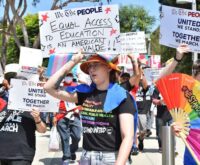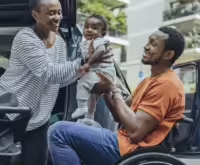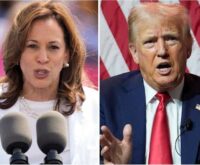The latest response to discrimination and police brutality is renewed calls to #BankBlack and bring economic empowerment to struggling communities.
By Zenobia Jeffries
Yes! Magazine, Aug 03, 2016 —
Singer Solange Knowles, sister of pop star Beyonce, recently announced that she was moving her dollars to a Black-owned bank. Last month, Knowles posted on her Instagram account—where she has over a million followers—“I’m proud to say I made that step today. Time to literally put my money where my mouth is.”
Her post included a list of the Black-owned banks in the United States. There are 22 of them. In addition, there are 318 credit unions with African American designations to also choose from.
Over the past several weeks, the movement to #BankBlack has grown, partly in response to the recent police shootings of Black men and boys, and celebrities like Knowles have spotlighted the movement, calling for unity and a focus on rebuilding Black communities—dollar by dollar. There was a similar campaign that grew out of the Occupy movement five years ago to get money out of big corporate banks and into local banks. Millions of dollars were reportedly moved into communities as a result.
Calls to “bank Black” generated nearly a million dollars of new deposits for Citizens Trust Bank.
In July, calls to “bank Black” generated nearly a million dollars of new deposits for Citizens Trust Bank, which has branches in Georgia and Alabama. Rolling Out Magazine reported that more than 8,000 people each transferred at least $100 into Citizens Trust in five days. A week later, several Houston-area rappers joined the movement by transferring their money to Black-owned banks. They opened their accounts at Unity Bank, the only Black-owned bank in Houston.

National Bankers Association chairman Preston Pinkett III credits the Black Lives Matter movement for generating the attention and focus on economic empowerment. “The Black Lives Matter movement is a complement to an emerging economic empowerment movement that is engulfing Black communities all over America,” he told the Philadelphia Tribune.
One United Bank, which has branches in Massachusetts, California, and Florida, has issued a #BankBlack challenge. They’re asking African Americans to open up savings accounts for $100 and to challenge 20 friends to do the same.
Its website reads, “When people #BankBlack, the result is better circulation of Black dollars with Black businesses, the creation of more jobs for the Black community, more access to affordable home loans, education for urban communities on financial literacy, and, most importantly, the power of the Black dollar is increased.”
In Michigan, First Independence is the only Black-owned bank, operating three branches in Detroit. Although it did not officially start a move-your-money campaign, it has reported an increase in accounts over the past several weeks. The bank received more than 200 new deposits in July that totaled approximately $200,000, according to First Independence’s president and chief operating officer Richard Zamojski.
White dollars are welcome too.
Detroit resident Raina Baker, 25, believes this is an organic, leaderless movement aimed at giving direct support to Black communities. She opened an account at First Independence bank in April, prior to the recent celebrity attention. Baker, a poet and program manager for Detroit’s Motown Museum, said, “It’s just something we felt moved to do on our own.”
The call for support is not exclusively for African Americans, but it is directly to African Americans.
Baker said the demands on White allies fighting for justice in African American communities have changed. “It’s not necessarily performing activism or being in the same spaces,” like protests and demonstrations, said Baker. “It’s also giving us money to work with.”
So White dollars are welcome, too.
Realtor Deangelus Garcia Jr. opened a business account at First Independence this year. The 28-year-old said there aren’t a lot of opportunities anymore to support Black businesses in a practical way. So opening his account with First Independence was the answer to what he was looking for.
“I believe this can prove successful for Black communities, just because there’s strength in numbers,” said Garcia. “The more accounts that are opened, the larger variety of products the bank can provide to its customers,” and the more these financial institutions can invest in the community to help it become economically sustainable.
He added, “It has the potential to affect lending practices and promote financial literacy. Finances are such an important part of our day-to-day lives, and not enough people understand the tool that they walk around with every day.”
African American-owned banks are a tiny percentage of the U.S. banking industry, and they continue to struggle.
Black-owned banks control only $5 billion in assets compared to large banking institutions like Wells Fargo, with assets totaling $1.7 trillion. Between 2001 and 2015, more than half of Black-owned banks closed. Last year, The Washington Post reported that, in 2013, 60 percent of Black-owned banks lost money.
“Right now we are the consumers, and the people we are buying from are not in our communities.”
The efforts to build African American-owned institutions—financial and otherwise—was part of the historic civil rights movement, said economist and retired Oakland University professor Karl Gregory. He was a longtime civil rights activist and the chief organizer of efforts to open the federally authorized First Independence National Bank in Detroit in 1970.
It was a laborious process that took two and a half years because organizers had to raise the capital themselves—75,000 shares of stock at $20,000 a share in a low- to middle-income community. Organizers were people who cared about Detroit’s Black community and included doctors, ministers, graduates from Morehouse College, and several distinguished Black professionals, like Berry Gordy Sr., father of Motown visionary Berry Gordy Jr.
Those organizers knew that it was critical to the progress of predominantly Black communities that ownership of businesses and institutions diversify. Discrimination was a matter of fact, and Black communities were rigidly segregated from suburban communities, where most of the White bankers lived. In the absence of Black-owned banks, Black customers were being underserved and there could be no business development without loans.
The call to support marginalized ethnic institutions and businesses—specifically African American businesses and institutions—is not new. It’s happening again because so little has improved. “Right now we are the consumers, and the people we are buying from are not in our communities,” Gregory said. “The only way to solve this is to build Black institutions that are competitive and can serve not only Blacks, but Whites too.”
And start empowering ourselves, he said.









